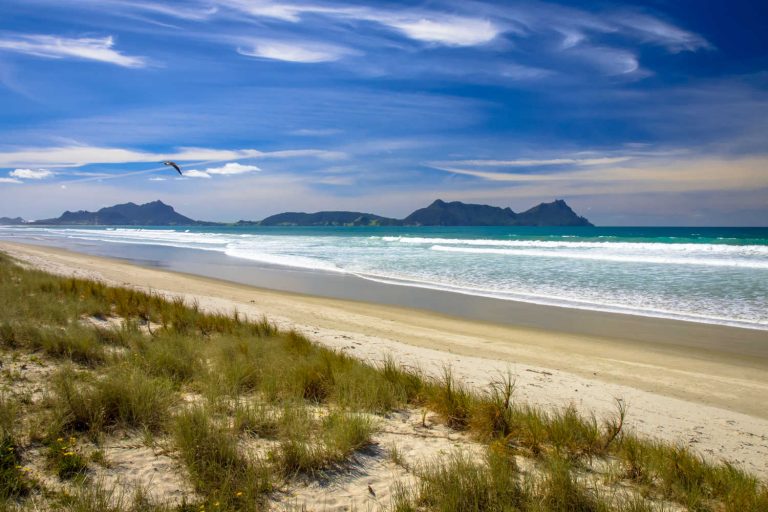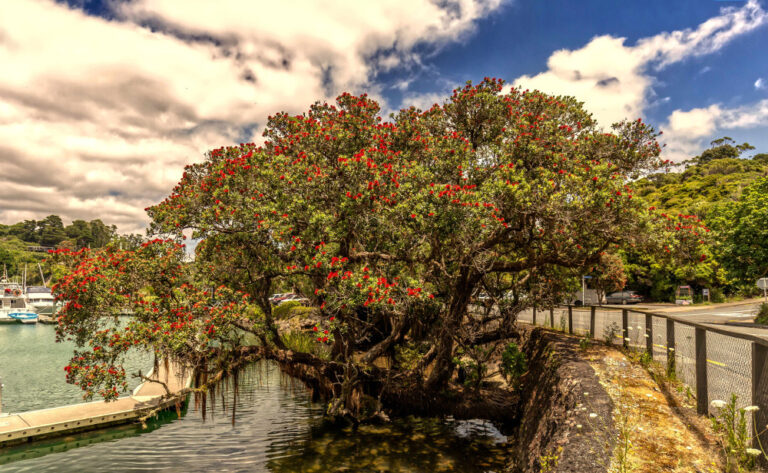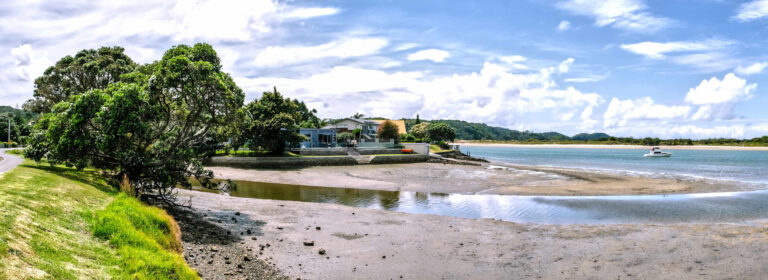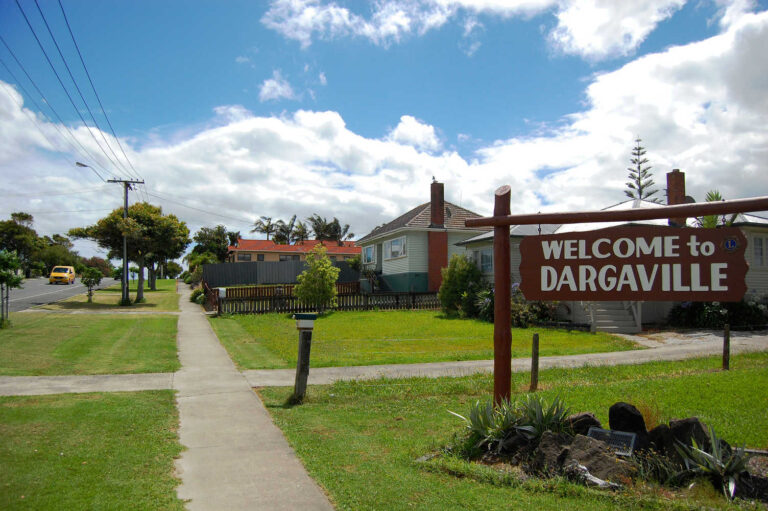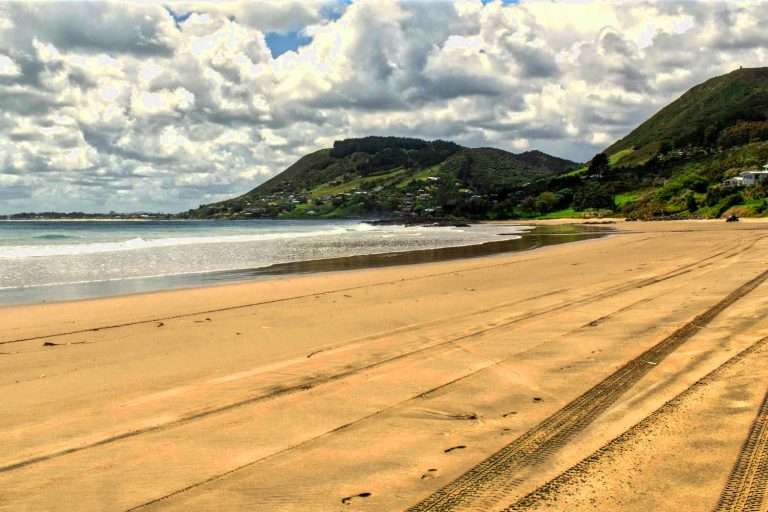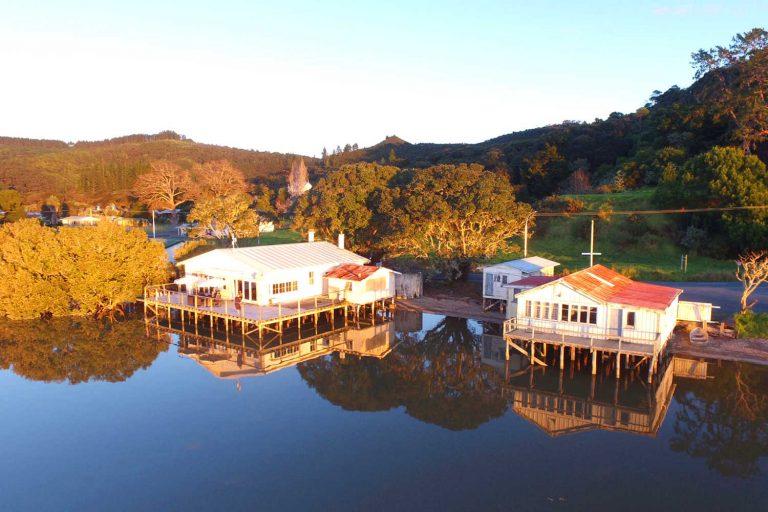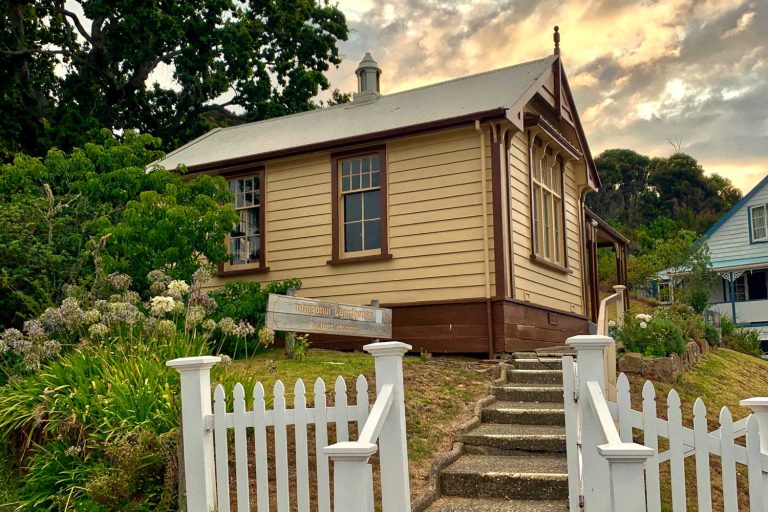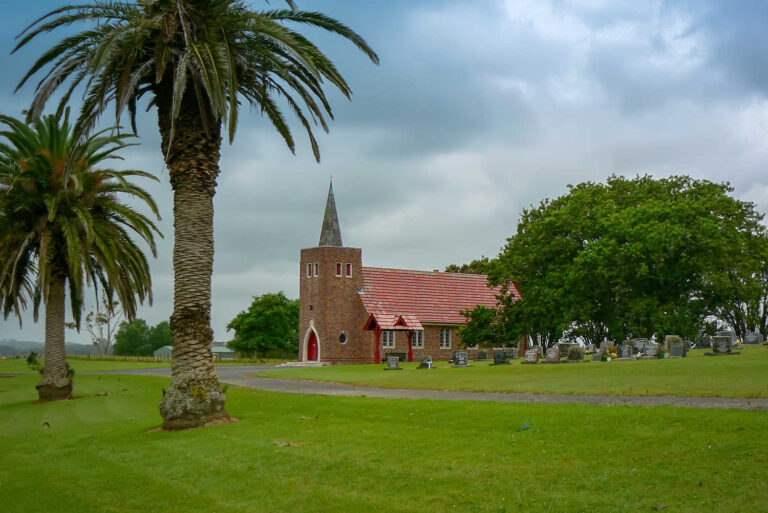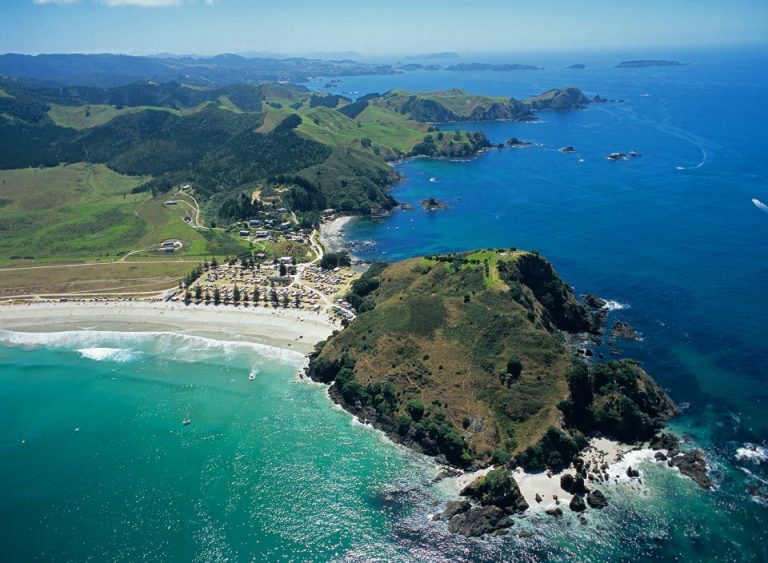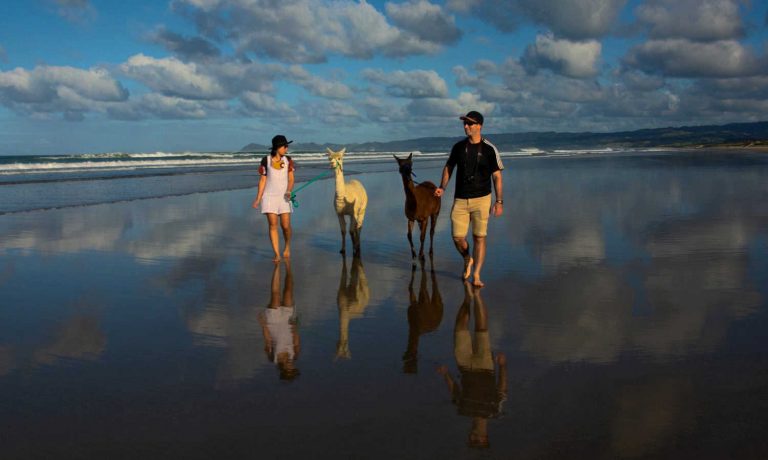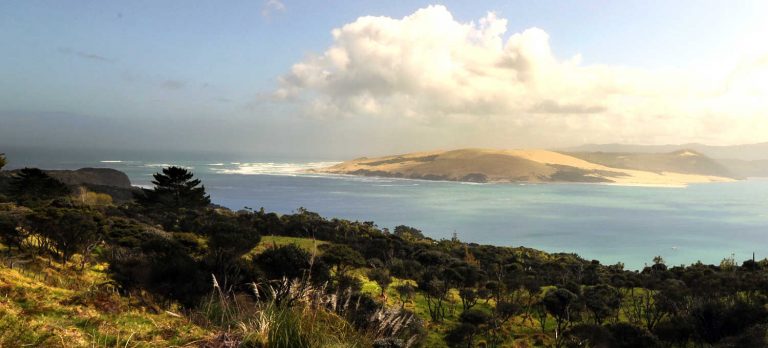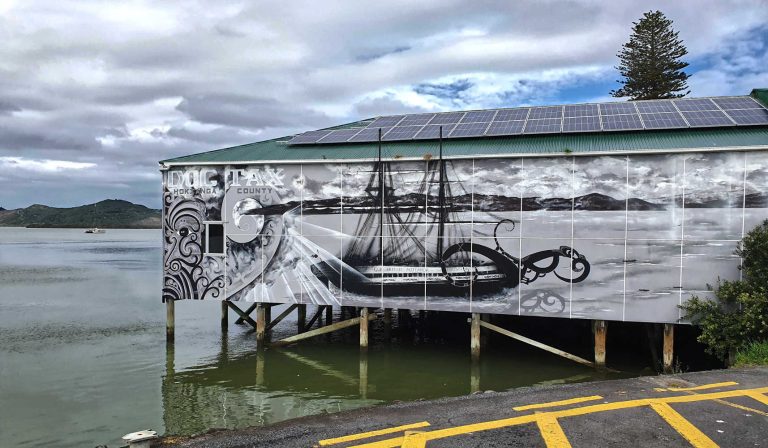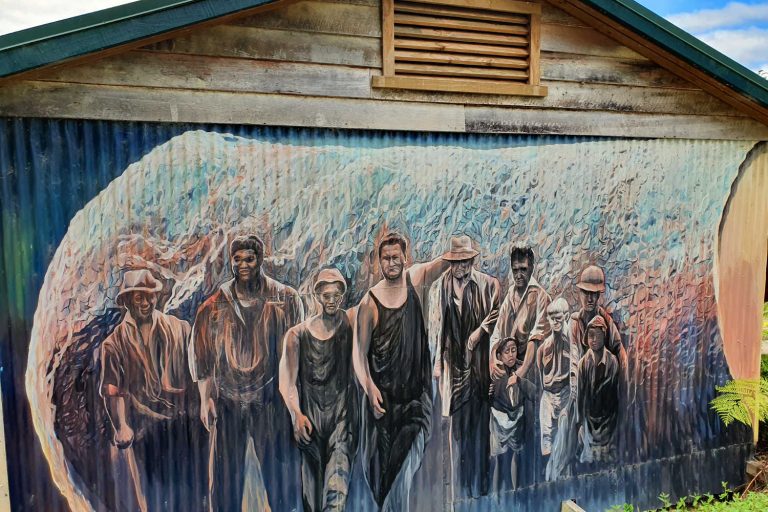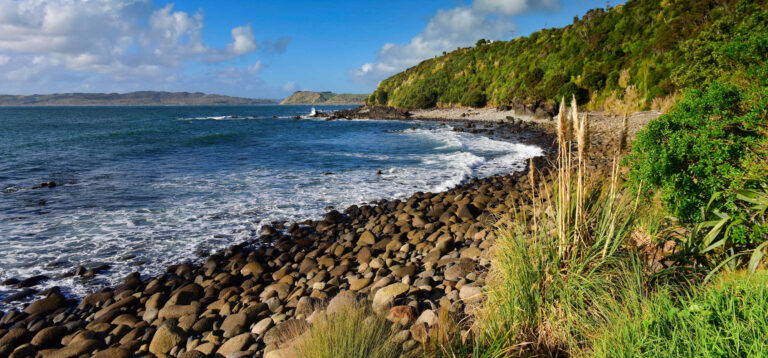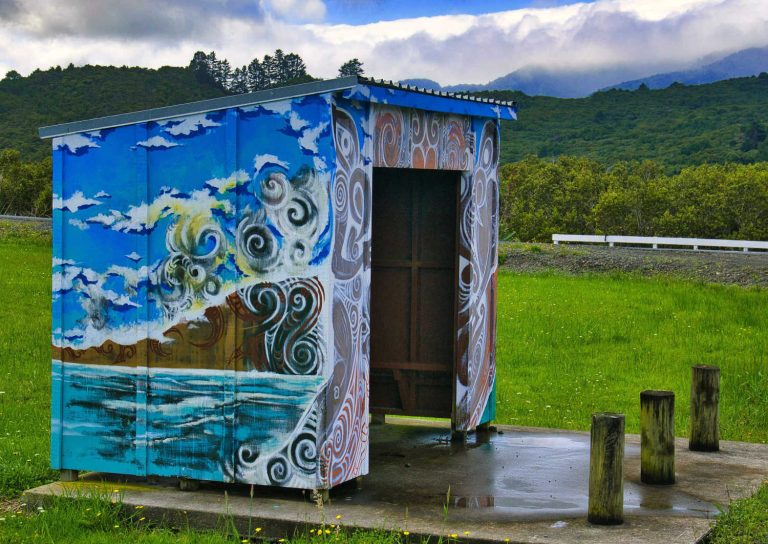Ninety Mile Beach town welcoming visitors to explore the region
Ahipara there are plenty of things to do. Bucket list Cape Reinga is stunning then Ahipara is a natural place to start finding the edges of New Zealand. Adventure further north along Ninety Mile Beach via 4WD. A popular beach activity is to go for a beach drive on the registered road. Low tide is essential. Ahipara is more than a beach, there is a vibrant local art scene, a picturesque golf course with sand dunes offering challenges and the welcoming vibe of a small community.
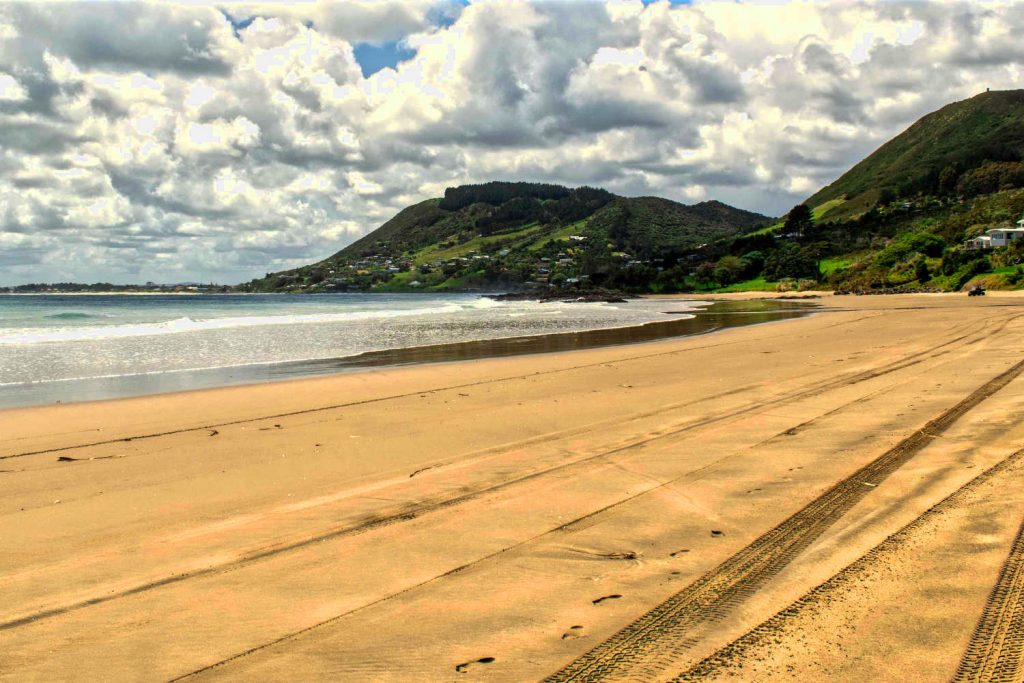
WHAT TO SEE IN AHIPARA, HIGHLIGHTS
- Art lovers joy – Te Whare Whiri Toi Gallery
- St Clements church and historic Maori cemetery (check travel pack info for more details)
- Shipwreck Bay, where the kauri gum diggers launched lighters to waiting cargo ships, is now an internationally known surfing beach
- Cape Reinga gateway via Ninety Mile Beach
- Ninety mile beach, horse trekking, sand boarding, land kiting and surfcasting
- Golf among the sand dunes, its 18 hole magic and the best place to catch the golfing bug. Full club facilities. All visitors are welcome. Hire clubs and trundlers available.
Te Whare Whiri Toi Galley
An extensive collection of local Maori artisan items from carvings, flax woven baskets, purses, bags and wall hanging is worth a detour to Ahipara.
The gallery is a glorious celebration of Maori cultural art reimagined in a contemporary scene.
There are regular exhibitions of new, emerging and established artists.
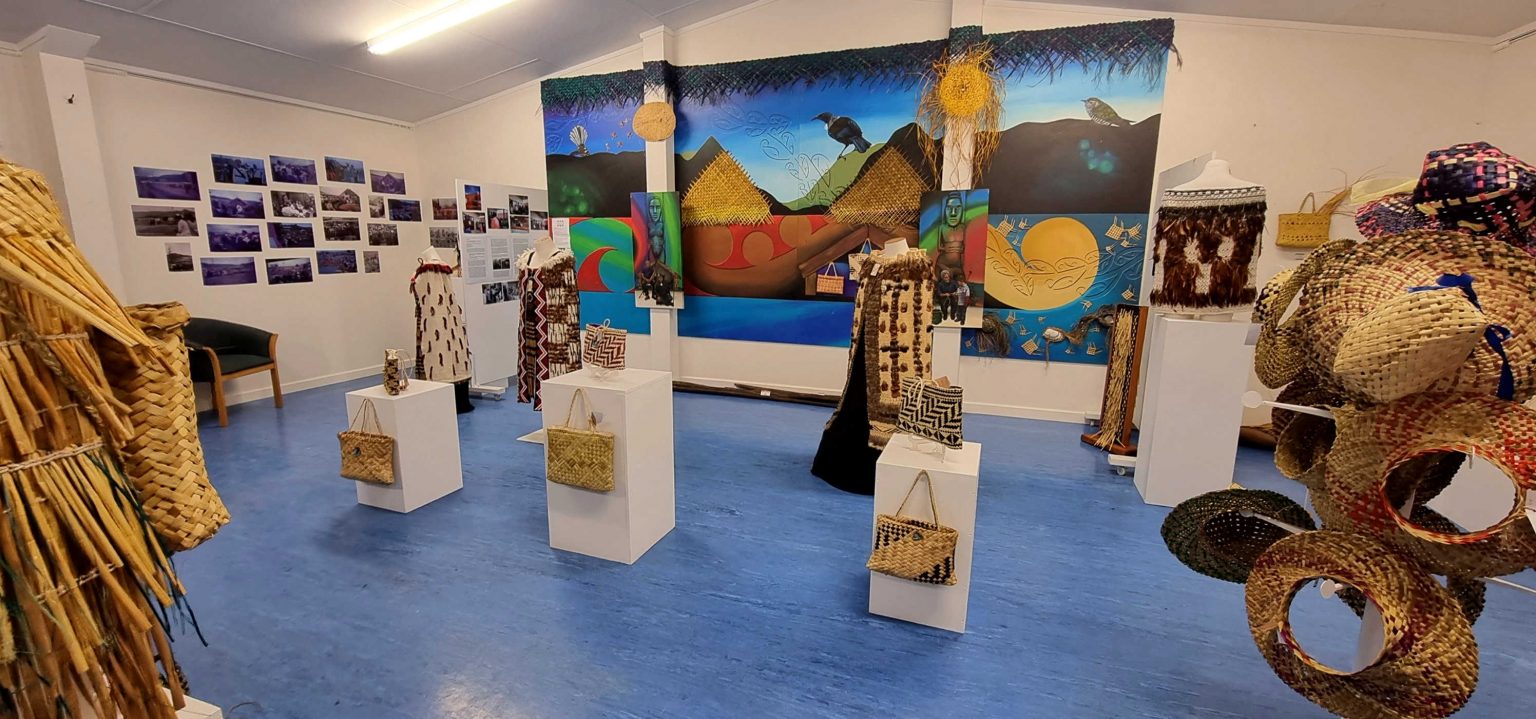
Wildlife encounters with dolphins and whales can regularly be seen from shore. Northland’s wild horses are known to frequent the beach, that is magical watching a pack of wild horses gallop down the beach.
Towering sand dunes of Tauroa Peninsula are the entrance way to Shipwreck Bay, a well known surf break with consistent rolling swells from the Tasman that are forced to peel along Reef Point.
Of historic interest is the Ahipara Gumfields Historic Reserve. Like other parts of Northland, digging and mining of Kauri Gum used to bring money into the area. Until the Gum ran out.
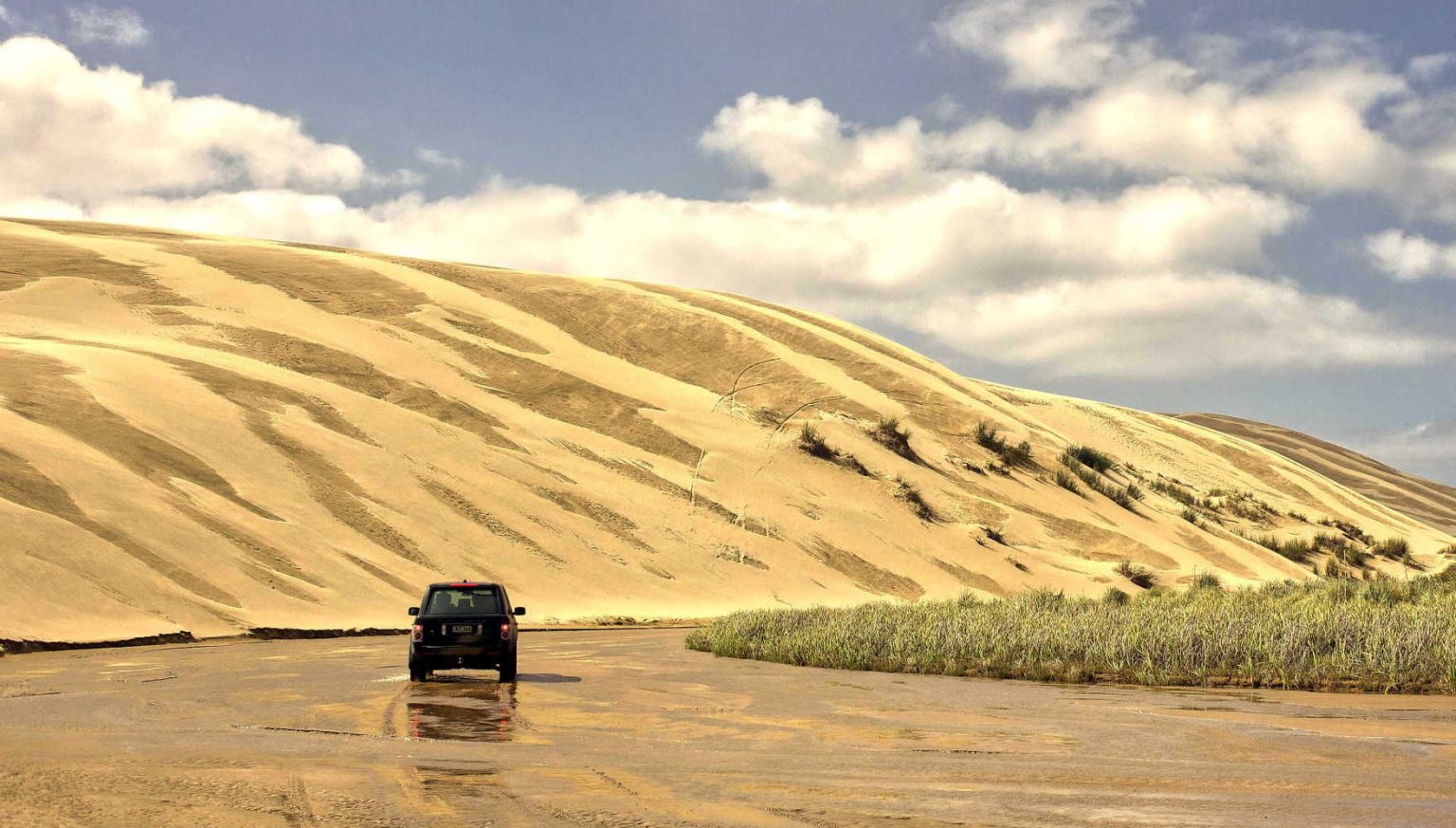
AHIPARA’S FAME
- Pareaute Polly Nathan awared Queens Service Medal for outstanding contributions to Maori education and weaving (2016)
- William Puckey, New Zealand’s first documented land yacht was sailed by the missionary William Puckey (1830’s), speed estimated at over 50km. Land yacht races continue to this day.
- Ninety Mile Beach is an official road and famous in its own right
AHIPARA’S NOTORIETY
- Drugs the scourge of the area. The biggest heist was over 400kg in 2016.
WHERE TO TAKE THE BEST SELFIE IN AHIPARA
- Ninety Mile beach at sunset or sunrise
- Golf course for spectacular sweeping ocean views
- St Clements church and its hillside perch
AHIPARA FOR KIDS
- The beach where the best things are free, from beachcombing for driftwood, shells and dried seaweed. The glittering gray sand is memorising with its sheer scale reaching beyond the horizon.
- Rock pools at Shipwreck Bay. Or where the
- Wairoa River estuary for safe sand boarding or paddling
- Kotare playground to work off excess energy
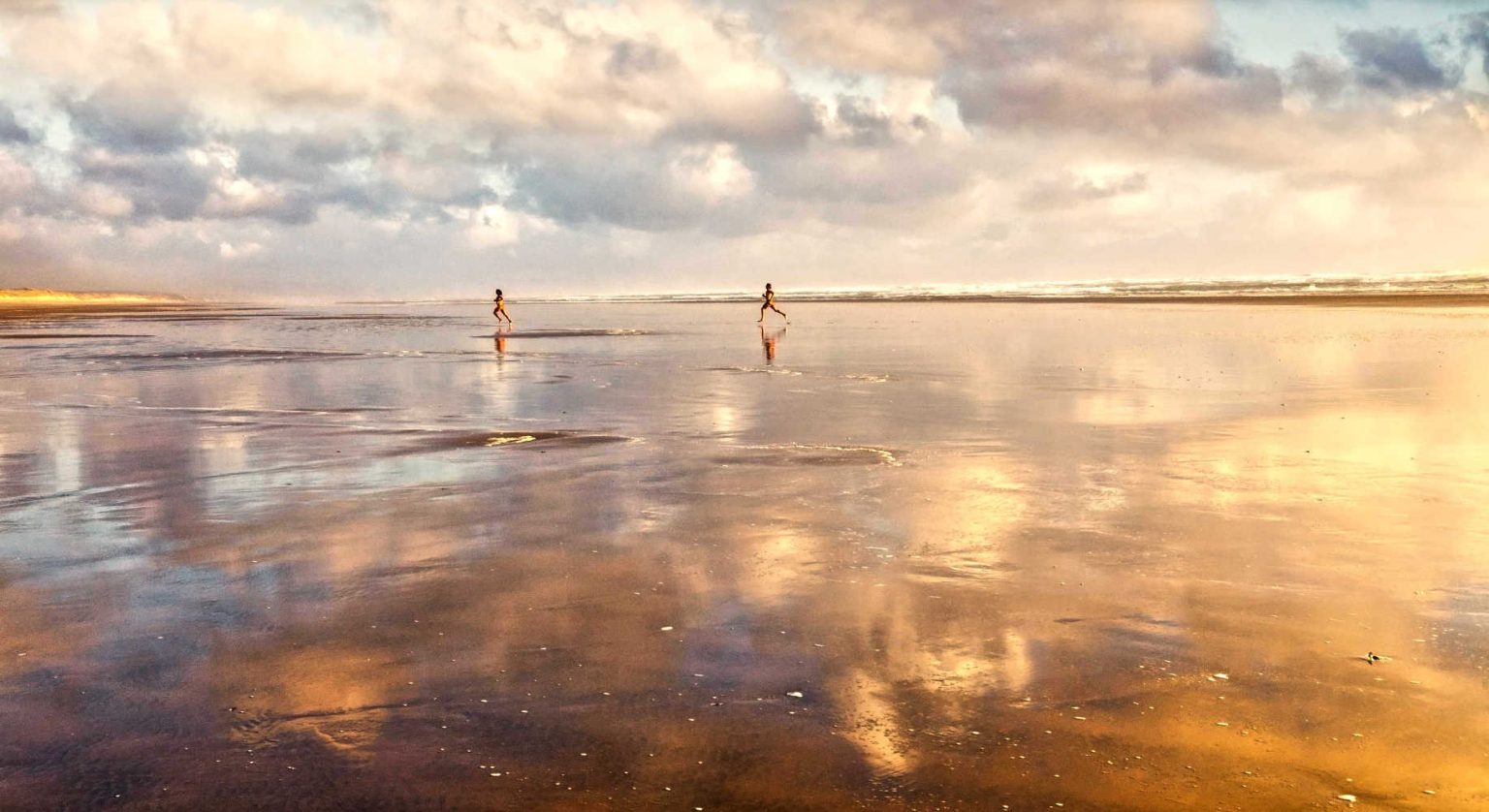
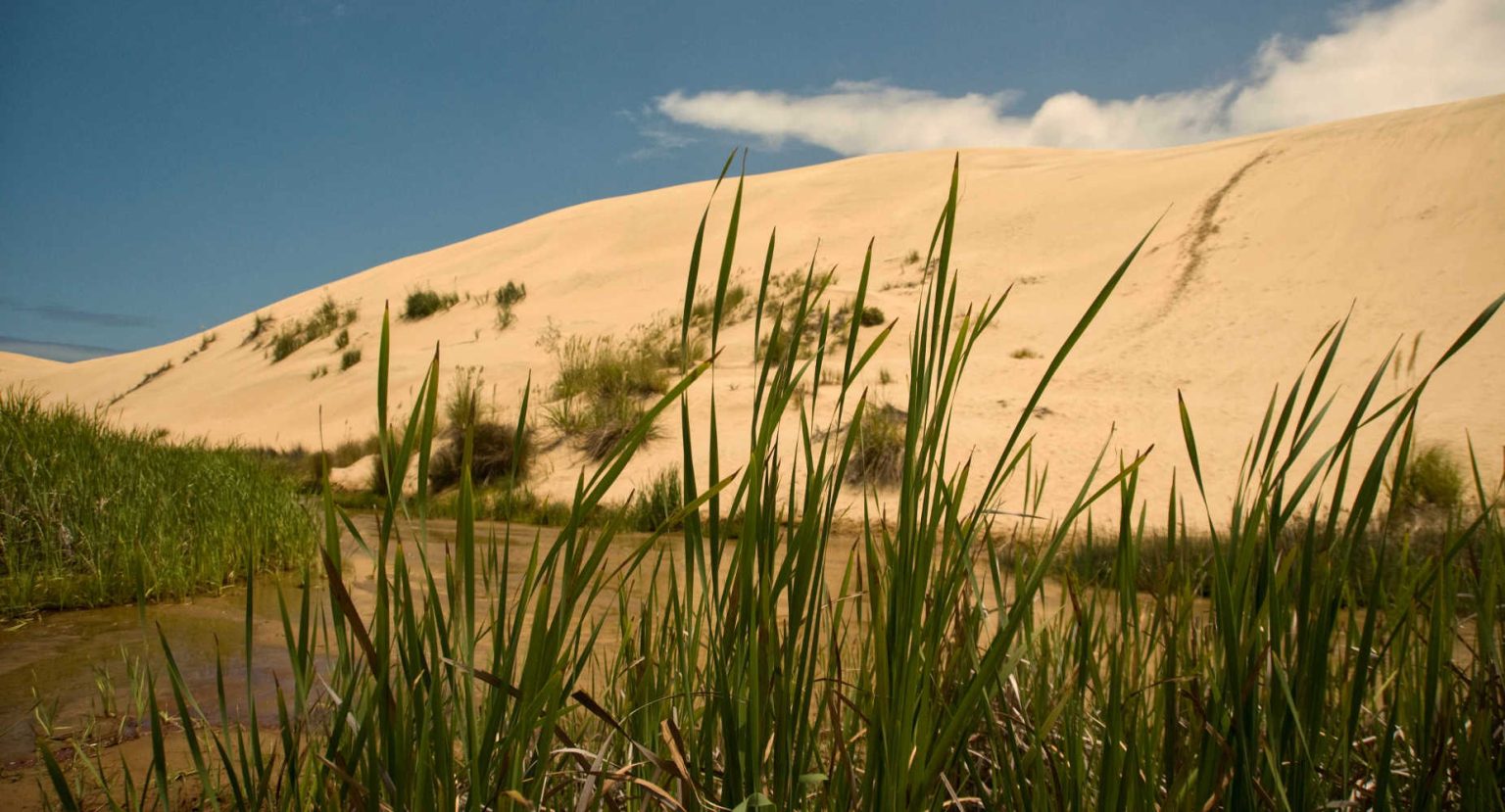
AHIPARA’S MOTTO
- Ahipara – the gateway to Ninety Mile Beach.
AHIPARA’S WEATHER
AHIPARA’S POPULATION
- 1,230 (2018)
WHAT MAKES AHIPARA TICK
- The major employer is commercial fishing with tourism a developing market.
FESTIVALS IN AHIPARA
- Fishing competitions with big prizes, such as The Snapper Classic. The local schools are keen participants in thundercat racing, surfing champions and gala.
- Te Houtaewa Challenge is one of the most intense races in New Zealand, drawing a huge international crowd.
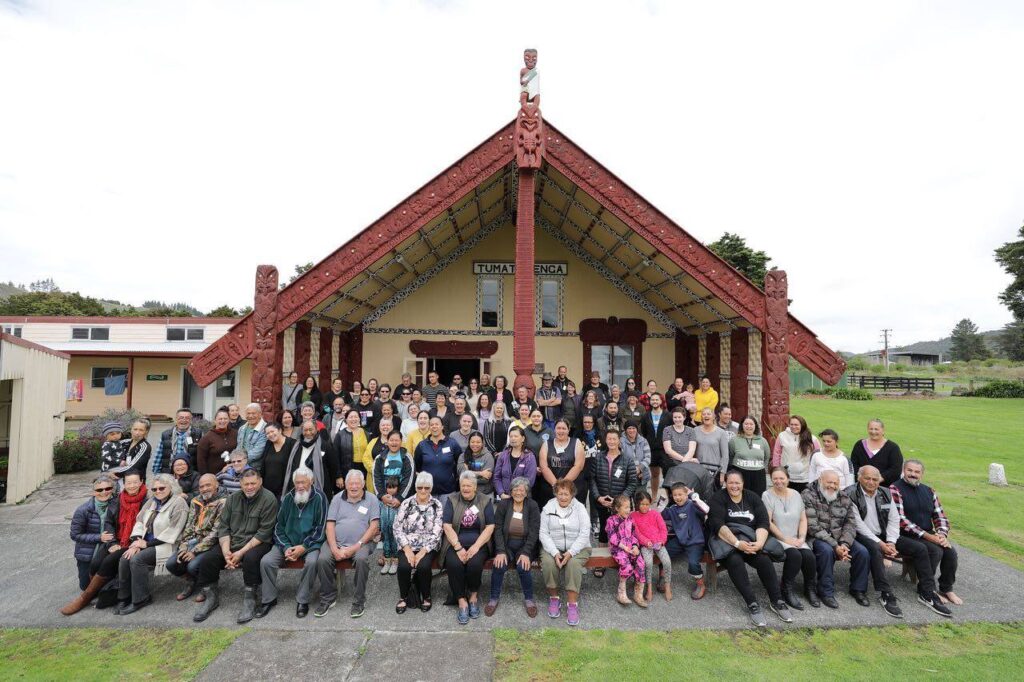
BE CAREFUL IN AHIPARA
- Don’t get stuck in the sand driving your urban two wheel drive. It’s expensive and worse, you are probably stuck at the low tide mark.
WHO TURNED UP AND NAMED AHIPARA?
- Located on Ahipara Bay, at the southern end of Ninety Mile Beach, the township of Ahipara once served a kauri gum-digging area. Gum was shipped out to coastal steamers from the beach. This is Northland’s wild west. When worldwide demand for kauri gum tailed off in the 1950s, Ahipara became one of Northland’s best-kept secrets, known to a few beachcombers who maintained picturesque, ramshackle beaches here and, of course, to the surfing community
JUDGMENT ON AHIPARA
- Your Cape Reinga bucket list now includes a stop at Ahipara
Every town adds to the richness of things to do and see. For more details about the region check Far North & Northland Region nearby attractions and events.
TRAVEL PACK INFORMATION
- The name comes from the Māori language words ahi, meaning fire, and para, a large fern, and can be translated as “a fire at which para was cooked”. Prior to the late 18th century, the area was called Wharo, which means “stretched out”. That name originated when the chief Tohe ordered a slave to measure the distance the tide had receded, by counting the number of arm-spans from the high water level. Wikipedia.
Below from online resource Te Rūnanga o Te Rarawa.
St Clements Maori Anglician Church
- “The Māori Anglican church in Ahipara stands as a testament to the courage and strength of kuia and kaumātua, tribal elders and haukāinga leaders to maintain a Māori world view while incorporating aspects of Christianity into their customs.
The church in Ahipara is named St Clements or Hato Keremeneta. It’s located on a historical pā site called Pukemiro. The church was built by tūpuna Inoka Tutangiora, Rapata Wharawhara, Kihirini Te Morenga and Te Rarawa kaumātua Mehana Nehemia Te Rau under the guidance of Richard Matthews the son of Joseph Matthews in 1874. Mehana Nehemia Te Rau later renamed himself Keremeneta as a tribute to the building of the churched. The local Māori community supported their tūpuna and the early missionaries complete the build.” Ngā Whare Karakia – St Clements Māori Anglican Church. Listen to the story of the church as told by its members.
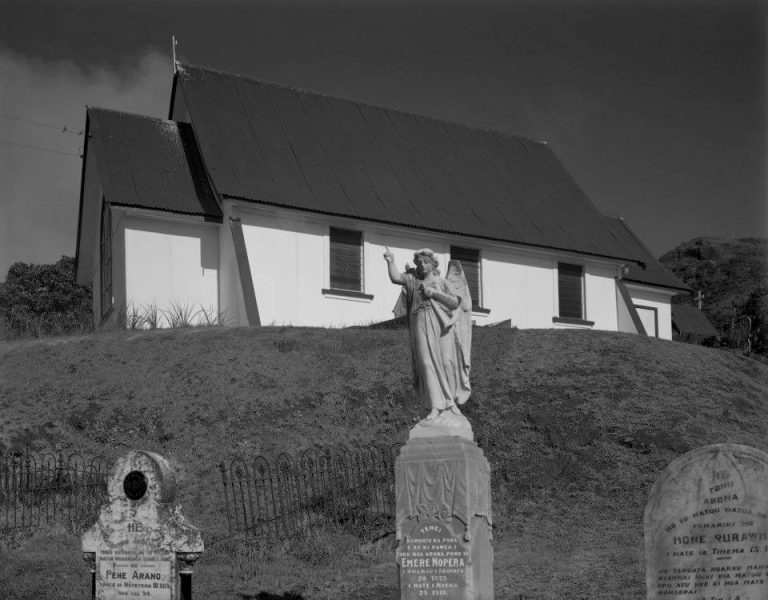
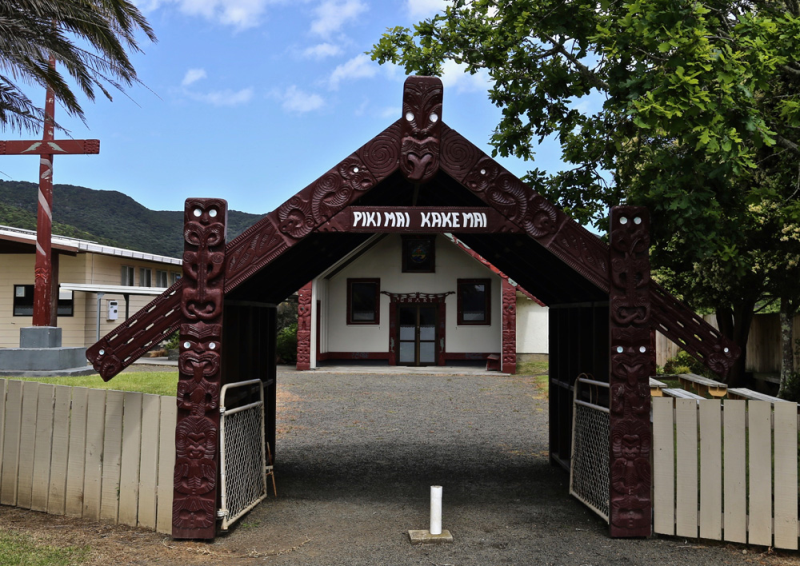
Widely regarded as one of the oldest marae at the spiritual heart of Te Rarawa, Roma Marae is located close to Te Oneroa a Tohe (Ninety Mile Beach), Ahipara, in the Far North. It is here we believe that the spirits of our Tupuna (ancestors travel their spiritual pathway to Te Rerenga Wairua or Departing Place of the Spirits.
Whare Tupuna (Meeting House)
Poroa was a well-known chief of Te Rarawa. The name of our Whare Tupuna: ‘Te Ohaki’ refers to the covenant left by Poroa at his passing: ‘Kia u ki te whakapono, kia aroha tetahi ki tetahi’. Hold strong to your beliefs and love one another.
Photos of our beloved ancestors within the Whare Tupuna are a constant reminder of this whakatauki.
Whare Kai (Eating House)
The name ‘Maru-a-Roto’ means storehouse of plenty.
Facilities within our kitchen/dining room are recently renovated and modern. All kitchen equipment is supplied.
He Puna – Pounamu (Greenstone)
He Puna is dedicated to the late Ephraim Te Paa, who was widely acknowledged as a spiritual of Te Rarawa and Maoridom in general. He traveled extensively both locally and abroad and was well known for his work as a member of the Bahai faith. He Puna is one of the largest pieces of greenstone in the Far North. Simply translated, the name ‘He Puna’ means spring of overflowing or everlasting.
Since its placement within the marae grounds in 1998 He Puna is constantly viewed by both Maori and Pakeha. Some refer to its healing properties; others are overawed by its presence. It has always been a source of wonder and interest to those who visit Roma Marae and a symbol of strength to our local community.
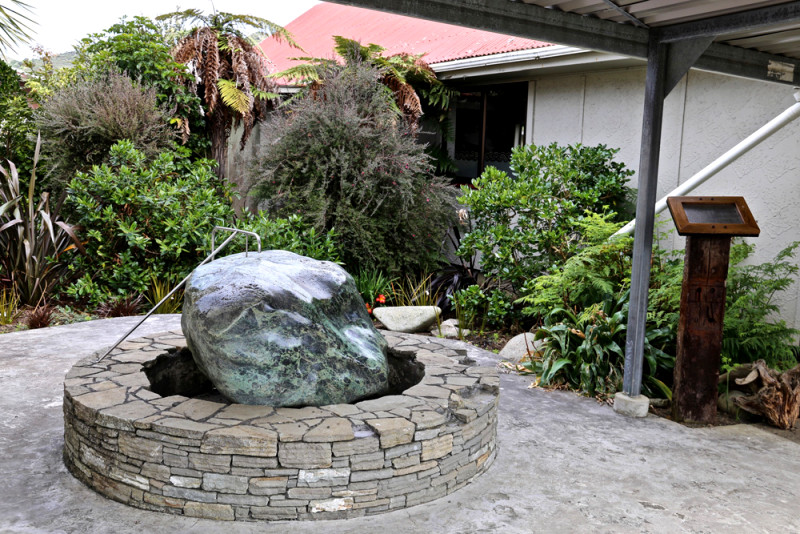
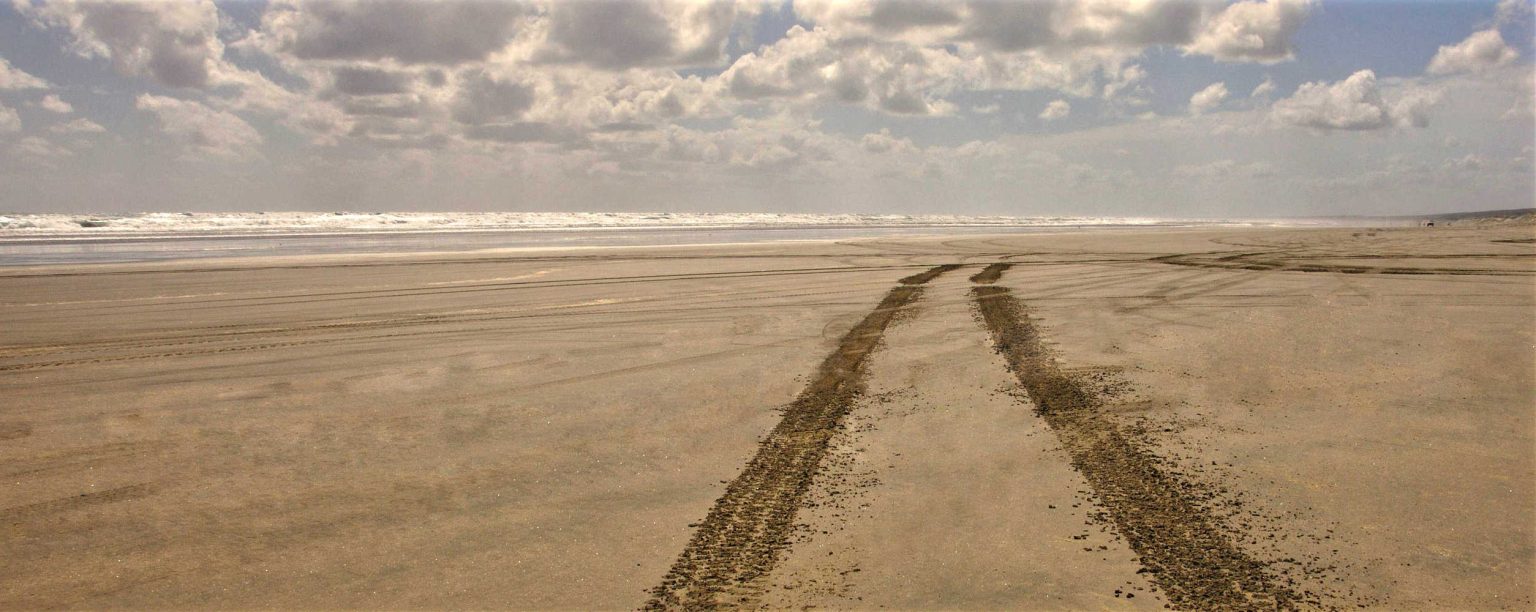
Te Oneroa a Tohe (Ninety Mile Beach)
Located 2kms from the Marae is Te Oneroa a Tohe; viewed as spiritually significant within Maoridom as ‘the pathway of the spirits’.
The people of Te Rarawa maintain a strong relationship with the ocean and Te Oneroa a Tohe, which supplies an abundance of seafood (paua, kina, tuatua, toheroa, mussels). The beach is still vital in maintaining a way of life for many people today.
Various activities are enjoyed by those who visit the area. Horse treks, fishing charters and quad bike tours are among some of the activities on offer through local tour operators. Te Oneroa a Tohe in particular is well known nationally and internationally for fishing and surfing events.
Cape Reinga
Cape Reinga Tours
Sand Safaris
This is a full-day comprehensive tour with many stops including Aupouri Forest, Ninety Mile Beach, Te Paki Stream & Sand Dunes, Cape Reinga, Tapotupotu Bay, Rarawa Beach, Te Kao, Houhora Heads and The Ancient Kauri Kingdom. We offer free pick-up from your local accommodation.
www.sandsafaris.co.nz
Dune Rider
A full day tour with several stops along the way to include Cape Reinga, Te Paki sand dunes, Gumdiggers Park and Ancient Kauri Kingdom just to name a few. Lunch included. Pick up and drop off at your accommodation.
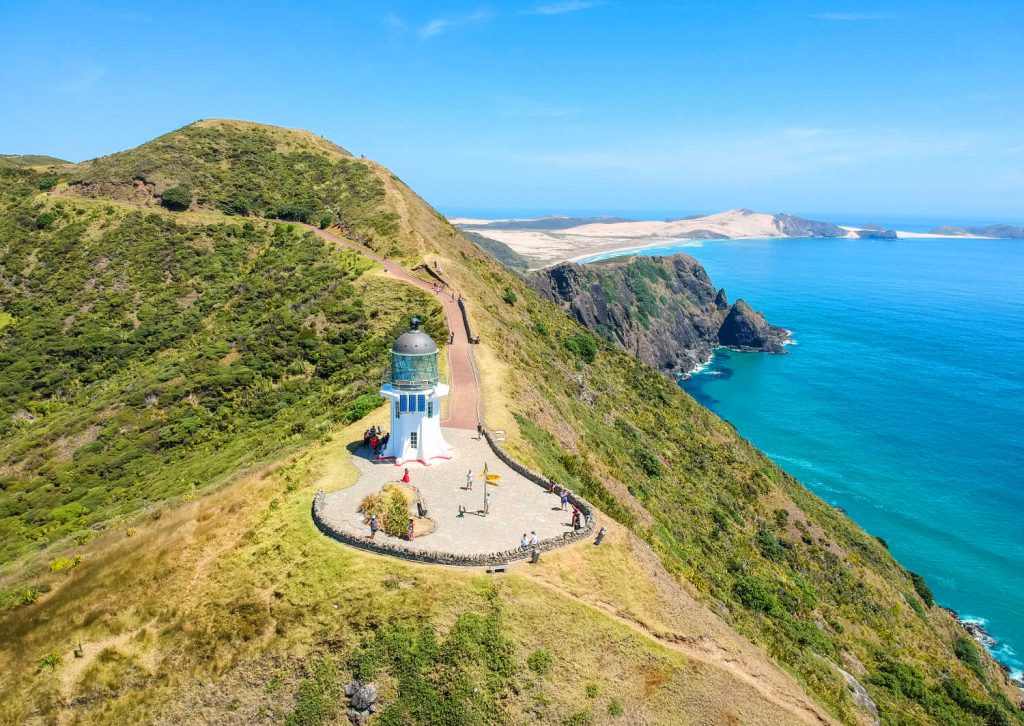
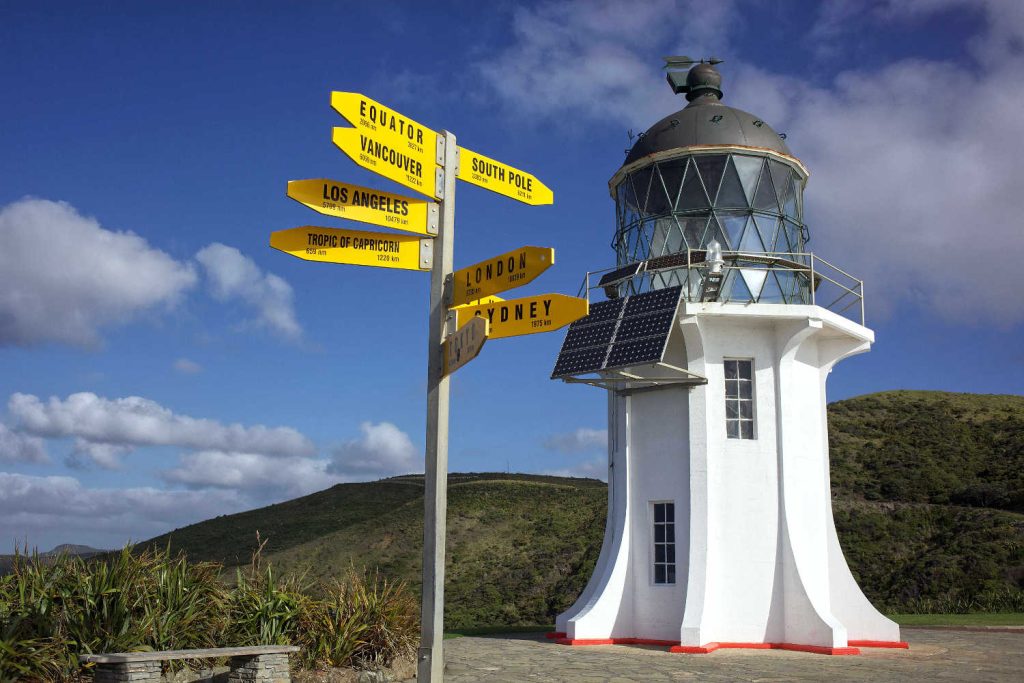
Cape Rēinga (Te Rerenga Wairua)
Craggy headland 6 km north-east of Cape Maria van Diemen, at the northern tip of the Aupōuri Peninsula. It rises steeply to 290 m above sea level, and is often thought to be the northernmost point of the country. However, North Cape lies about 2 km further north, and beyond that the coast at the foot of the Surville Cliffs is the most northerly point.
The lighthouse at Cape Rēinga holds one of the country’s most powerful lights, visible for some 50 km. The headland itself is the meeting place of the Tasman Sea and the Pacific Ocean. It also has spiritual significance for Māori as the departing place of souls (Te Rerenga Wairua) on their journey to the homeland, Hawaiki.
The spirit trail (te ara wairua) to Cape Rēinga lies along Ninety Mile Beach on the west coast. Starting at Ahipara at the south end of the beach, the departing spirit waits for an outgoing tide before journeying back to Hawaiki.
The final plunge into the sea is taken near an underground cave at the cape, where there is a much-photographed tree. The pathway was recorded by the first European known to have followed it, the missionary William Puckey, in 1834.
Ninety Mile Beach
Aupōuri Peninsula’s most dramatic feature, along the western coast. At just 60 miles (96 km) long from Shipwreck Bay to Cape Maria van Diemen, it is misnamed. The beach is a vast arch of fine white sand, backed by immense dunes and broken by rocky outcrops and shallow streams.
Known also as Te Oneroa-o-Tōhē (the long beach of Tōhē – an ancestor of Te Aupōuri and other northern people), it is a spectacular way to approach Cape Rēinga. It is famous for fishing and shellfish, and an annual surf-casting contest. Toheroa used to be taken from the beach, but the shellfish is now a restricted delicacy. At low tide, vehicles can use the beach. The main access is at the south end near Ahipara.
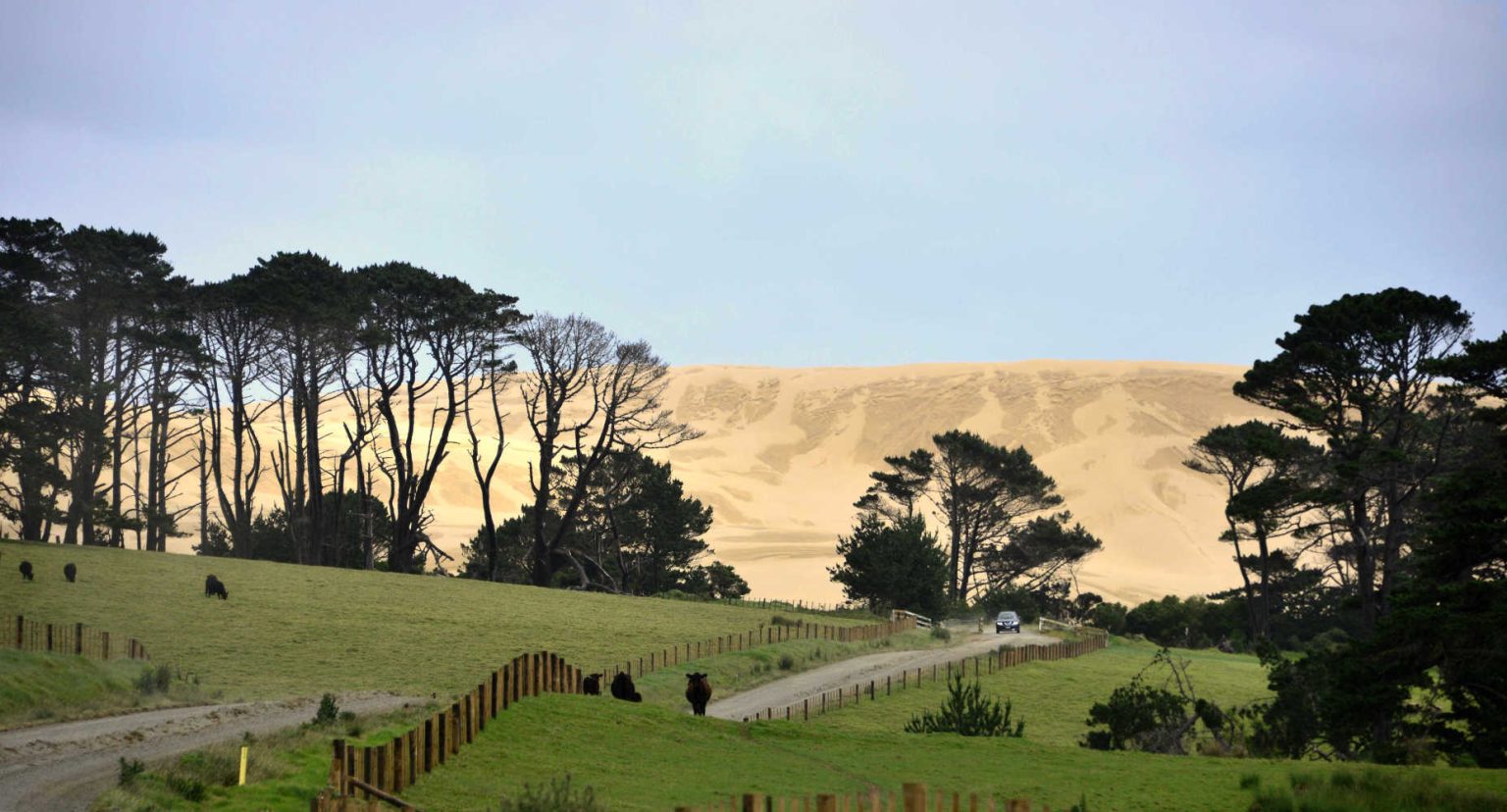
Two people convicted for being involved in the import of 501kg of methamphetamine have been sentenced to prison.
Stevie Cullen and Selaima Fakaosilea were found guilty earlier this year on charges of importing methamphetamine and participating in an organised criminal group.
The charges related to the import of 501kgs of meth at Ninety Mile Beach in June 2016.
BEST BITS TRAVEL GUIDE


